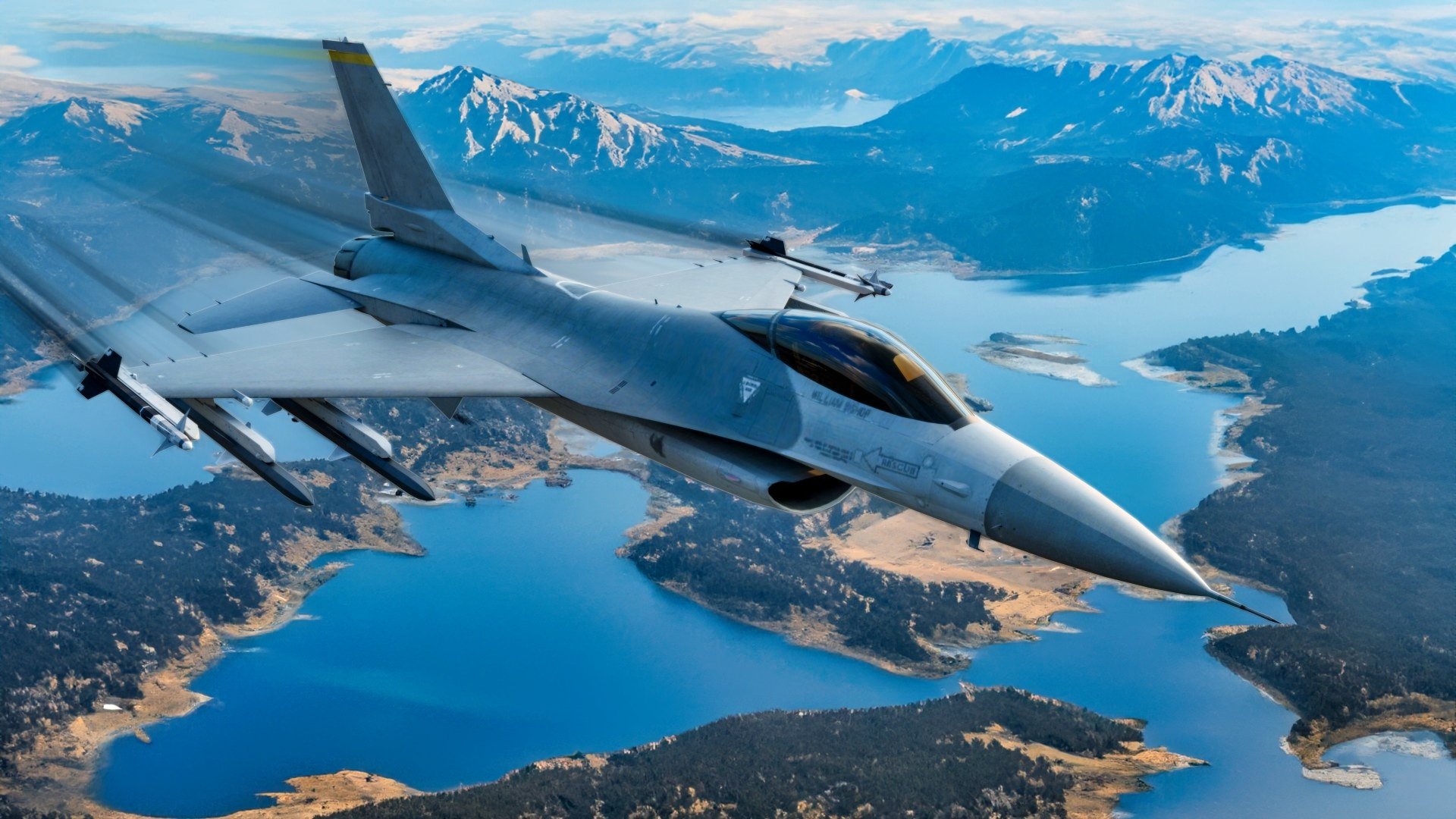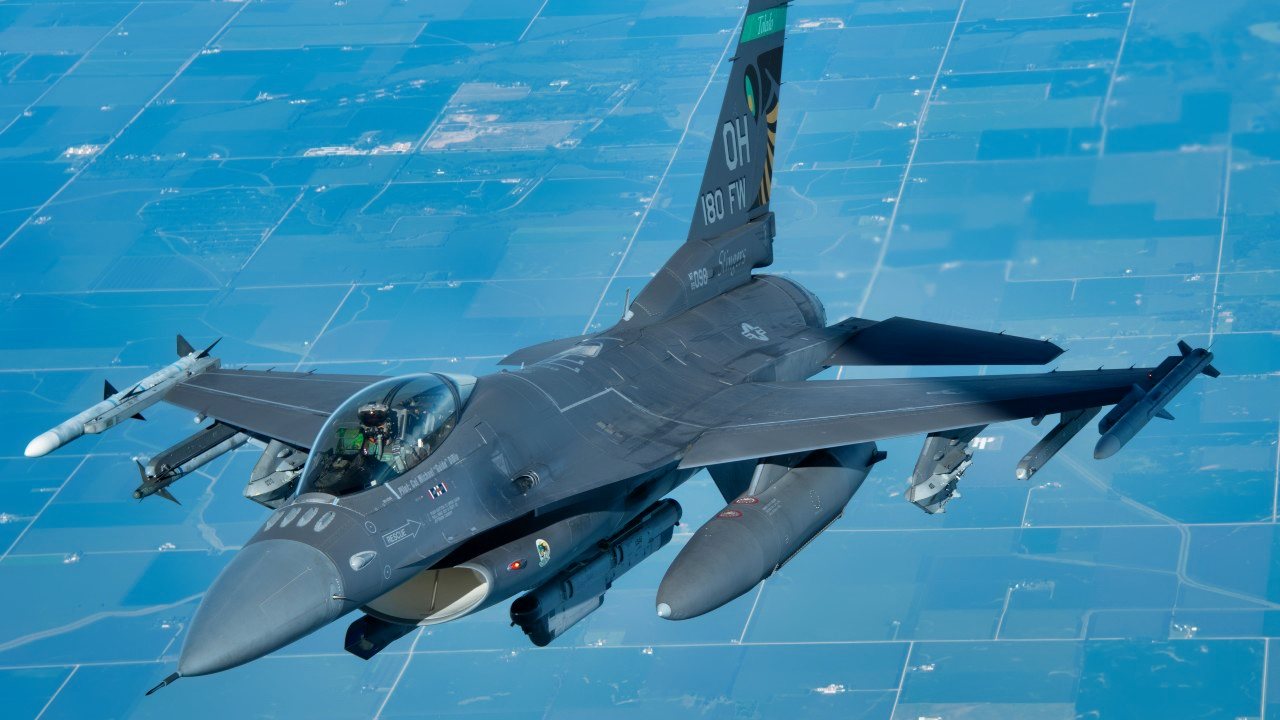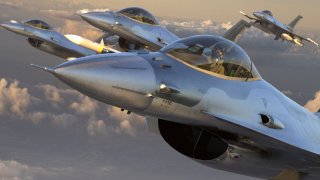Ukraine’s F-16s: A Game-Changer or Just a Boost?
The arrival of American-made F-16 fighter jets in Ukraine is seen as a significant boost to the country's air defense and support capabilities. However, while these jets offer advanced air-to-air and air-to-ground weaponry, including the AIM-120 AMRAAM and AIM-9 Sidewinder missiles, their impact on the war is likely to be limited by their numbers and lack of stealth capabilities.
Summary and Key Points: The arrival of American-made F-16 fighter jets in Ukraine is seen as a significant boost to the country's air defense and support capabilities. However, while these jets offer advanced air-to-air and air-to-ground weaponry, including the AIM-120 AMRAAM and AIM-9 Sidewinder missiles, their impact on the war is likely to be limited by their numbers and lack of stealth capabilities.

-Ukraine's F-16s, while a valuable addition, face significant risks from Russian air defenses and will not single-handedly change the course of the conflict.
The Great F-16 Debate: Will They Help Ukraine or Not?
More than two years since Russia’s full-scale invasion of Ukraine began, F-16 Fighting Falcons have officially begun arriving in the country, marking what many hope will be a shift in the embattled nation’s air defense and air support capabilities. These Western fighters represent what promises to be a significant increase in combat capability for the Ukrainian Air Force, but despite the potential these aircraft have to tip the balance toward Ukraine’s favor, it’s also important to keep in mind that the war for Ukraine’s future is far too large to be decided by any single platform or weapon system.
“F-16s in Ukraine. We ensured this. I am proud of all our guys who are skillfully mastering these aircraft and have already started using them for our country. I thank our team for this result. I thank all the partners who are truly helping with the F-16s, and the first countries that accepted our request for aircraft – Denmark, the Netherlands, the United States, – and all our partners, – we value your support,” Ukrainian President Volodymyr Zelensky said during a ceremony at an undisclosed location. “I wish our Air Force and all our warriors to feel the pride of Ukrainians in our combat aviation and to bring Ukraine the combat results that will bring our victory closer – our just peace for Ukraine.
But while we need to keep our expectations for these aircraft grounded in reality, these images of Ukraine’s first operational F-16s do offer us a promising glimpse at how these aircraft will be employed (at least early on) and, in turn, how they might affect the fight moving forward.
What types of air-to-air weapons are Ukraine’s F-16s carrying?
In images and video released by the Ukrainian Ministry of Defence, these F-16s were armed with air-to-air focused load-outs comprised of AIM-120 Advanced Medium Range Air-to-Air missiles (AMRAAMs) and AIM-9M Sidewinder infrared-guided air-to-air missiles.
The AIM-120, which serves as America’s primary beyond-visual-range (BVR) air-to-air weapon, comes in multiple forms, including the AIM-120C, which is optimized for internal carriage in stealth fighters like the F-35, and the AIM-120D — which is among the most capable iterations of the missile ever to reach service. The AIM-120D boasts GPS guidance, anti-jam capabilities, and a maximum engagement range that extends out beyond 110 miles. It isn’t entirely clear which version of the AMRAAM these aircraft are carrying, but previous statements from Ukrainian officials suggest it likely is the AIM-120D.

The AIM-120D is capable of hitting targets further out than the radar on Ukraine’s F-16s could likely identify them, and the weapon itself is network capable, meaning it could get target data from other assets in the battlespace, but it remains unclear as to whether Ukrainian forces will be able to leverage that capability at this point. This also points to the possibility that Ukrainian officials being quoted about the range of the weapons they were receiving could simply have been mistaken, and Ukraine may actually be receiving a less advanced (and long-ranged) iteration of the AMRAAM.
Regardless of which AMRAAM Ukraine’s F-16s fly with, it will represent a significant improvement over the R-27 semi-active radar-guided air-to-air missiles employed by Ukrainian fighter jets today. The R-27 has a maximum range of better than 60 miles, but is much more difficult to employ against enemy fighters due to its lack of onboard radar guidance. Unlike the AMRAAM, which can transition to its own onboard radar seeker as it approaches its target to close the remaining distance unassisted, Ukraine’s R-27s require continued guidance from the fighter’s onboard radar. This means Ukrainian pilots attempting long-range engagements need to chase the missiles they launch, maintaining a lock on their targets until the missiles make impact.
“After all, these aircraft have powerful airborne radars, technological equipment and, most importantly, missiles with active homing heads,” Col. Yuri Bulavka, a Ukrainian Su-27 pilot, said in April when asked why Ukraine needs Western fighters to say viable in the air war.
Russian forces have been attempting extremely long-range engagements against Ukrainian fighters using R-37M radar-guided missiles launched at high altitude by MiG-31BMs, which have a claimed maximum range of around 250 miles — though in practice, Russian aircraft have primarily been employing these missiles from inside of 80 miles — outside the reach of Ukraine’s R-27s, but well within the reach of AIM-120Ds if Ukraine’s F-16s are indeed carrying them.
The AIM-9M Sidewinder seen in these pictures is not quite as advanced and capable as the latest variants of the AIM-9X in use for the U.S. but is nonetheless seen as an extremely potent short-range weapon. The AIM-9M uses a traditional infrared seeker and control surfaces and is limited to engaging targets within the pilot’s forward field of view (as opposed to the AIM-9X’s high off-boresight targeting capability). Like much of the technology found within the F-16AMs being employed by Ukraine, the AIM-9M was cutting-edge in the early 1990s — being credited with at least 10 air-to-air kills in Operation Desert Storm alone.
However, according to reports from the Wall Street Journal, Ukraine will indeed be receiving AIM-9X variants of the Sidewinder missile, which will further increase the close-quarters combat capabilities of these F-16s. The AIM-9X not only boasts a significantly improved guidance system to better see through the tricks of common missile countermeasures like flares, but it also offers a massive increase in aerobatic maneuverability. The AIM-9X is famously so maneuverable, thanks to its thrust-vectoring rocket nozzle, that it can even engage enemy aircraft flying behind the launching aircraft — targetable through the helmet-cued targeting system Ukrainian pilots have already been seen training on.
Both the AMRAAM and the Sidewinder (in various iterations for each) will prove valuable not just for air-to-air combat, however — they’ll also be essential for expanding Ukraine’s air defense capabilities. Both AMRAAMs and Sidewinders are capable of downing long-range subsonic cruise missiles like Russia’s air-launched Kh-101, and the Sidewinder is a relatively low-cost option for engaging larger enemy drones than Patriot interceptors.
What types of air-to-ground weapons will these F-16s fly with?
One of the most important air-to-ground munitions these F-16s will leverage is America’s AGM-88 HARM, or High-speed Anti-Radiation Missile.
Ukrainian forces have already been using the HARM since August of 2022 or earlier, but because these weapons were being launched by dated Soviet jets that were never intended to use them, their utility has been dramatically limited.
Anti-radiation missiles like the HARM work by honing on the electromagnetic radiation broadcast by radar arrays – in other words, radar waves – making them uniquely suited for the suppression of enemy air defenses (SEAD) role. American Wild Weasel pilots often fly their aircraft into contested airspace, waiting for enemy air defense systems to power up in an attempt to target them or their wingmen. Once the air defense systems are broadcasting radar waves, Wild Weasel pilots launch their HARM missiles to hone in on those radar waves and destroy the air defense equipment.
Ukraine’s Soviet-era fighters are only able to leverage the HARM missile in what many call the “pre-briefed” mode. In effect, the missile is pre-programmed with a target area and then launched by an aircraft, often at a fairly long distance. The missile flies toward its intended target area, using its seeker to look for any air defense systems powering up and broadcasting radar waves for it to then close with and destroy.
This method can be very effective, especially when launching these missiles in volume, as even if they don’t ultimately destroy enemy radar sites, their presence alone will often prompt air defense crews to power down their arrays. This effectively amounts to suppression of air defenses, as those powered-down arrays allow aircraft to operate inside the contested area for a short time, but of course, once the HARM threat has passed, these arrays can power back up and begin hunting for Ukrainian jets all over again.
However, if operated by an aircraft carrying NATO-standard busses, like Ukraine’s new F-16s, pilots can leverage the HARM’s full capability set, including two more operational modes that can be very handy in a fight: “Self-protect” mode and “target of opportunity” mode.
In self-protect mode, the aircraft’s onboard radar warning receiver identifies an enemy radar array that’s broadcasting. It then passes that target data over to the HARM, which can hone in on either the broadcasting radar or the specific location that waves were coming from in the event the enemy powers the system down. The target of opportunity mode is similar but allows the AGM-88’s onboard seeker to spot enemy radar arrays powering up, which then alerts the pilot to launch the weapon.


